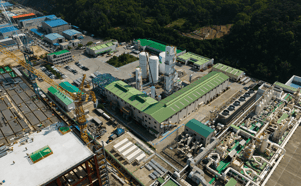CCS – The natural partner to decarbonisation
The Paris Agreement represents a significant shift in thinking. No longer are we aiming to limit global warming to 2°C. After Paris, we’re aiming for well below that – as little as 1.5°C. Whilst the successful conclusion of the COP21 negotiations was a significant and welcome outcome in itself, giving effect to its ambition is a far greater challenge. We must say ‘yes’ to all low carbon technologies.
But the world needs especially to say ‘yes’ to carbon capture and storage (CCS), and we need our political leaders to pave the way forward with strong policy support, just as they have for renewable energy and will need to continue doing so. CCS has a vital role to play in a portfolio of low-carbon technologies to tackle climate change at least-cost to the world economy. The Inter-Governmental Panel on Climate Change reported that the cost of reducing emissions would more than double if CCS was not utilised. It is a proven technology that is already reducing carbon emissions, with 15 large-scale CCS plants operating globally, and another seven under construction.
Carbon dioxide (CO2) separation technology has been deployed in some industry sectors for many decades, such as in natural gas processing. These separation technologies were developed to remove unwanted CO2 from gaseous products. Natural gas processing accounts for nine of the 15 large-scale CCS projects currently in operation around the world. The first of these, the Val Verde Natural Gas Plant in Southern Texas, began operation as far back as 1972.
In other industries such as hydrogen or fertiliser production, CO2 is a by-product of the production process. In fact, CCS is the only technology that can significantly reduce CO2 emissions from a diverse range of industrial processes that account for around one quarter of annual global emissions. In order to meet the demanding climate targets agreed in Paris, we can not afford to ignore 25% of emissions; we must reduce emissions from every sector of the global economy. Shell’s Quest project in Canada and the Tomakomai Demonstration Project in Japan are both significant and recent examples of CCS applied in an industrial process; hydrogen production.
... to continue reading you must be subscribed





















